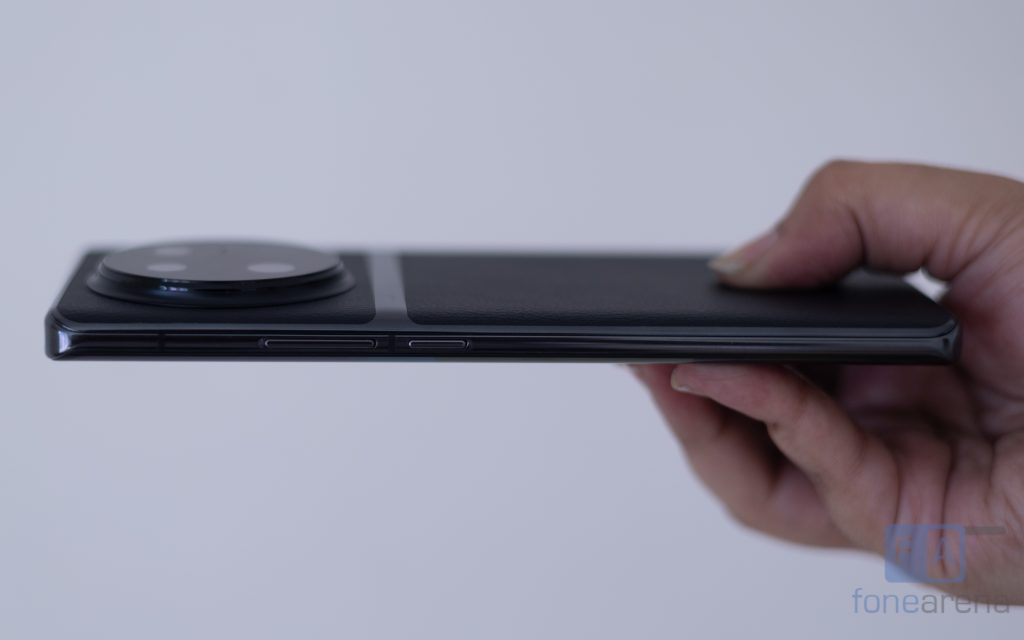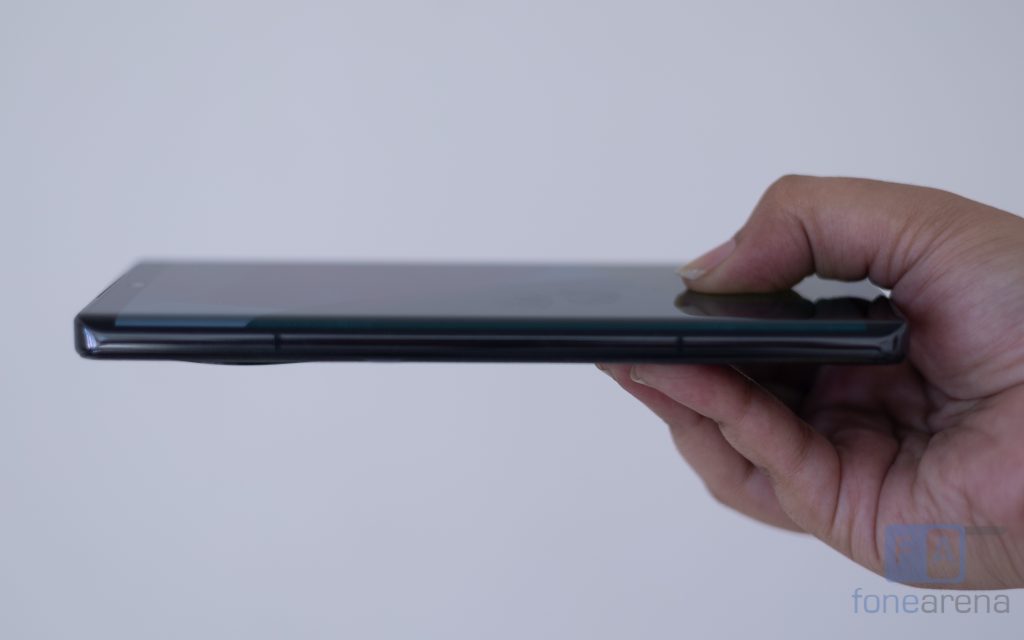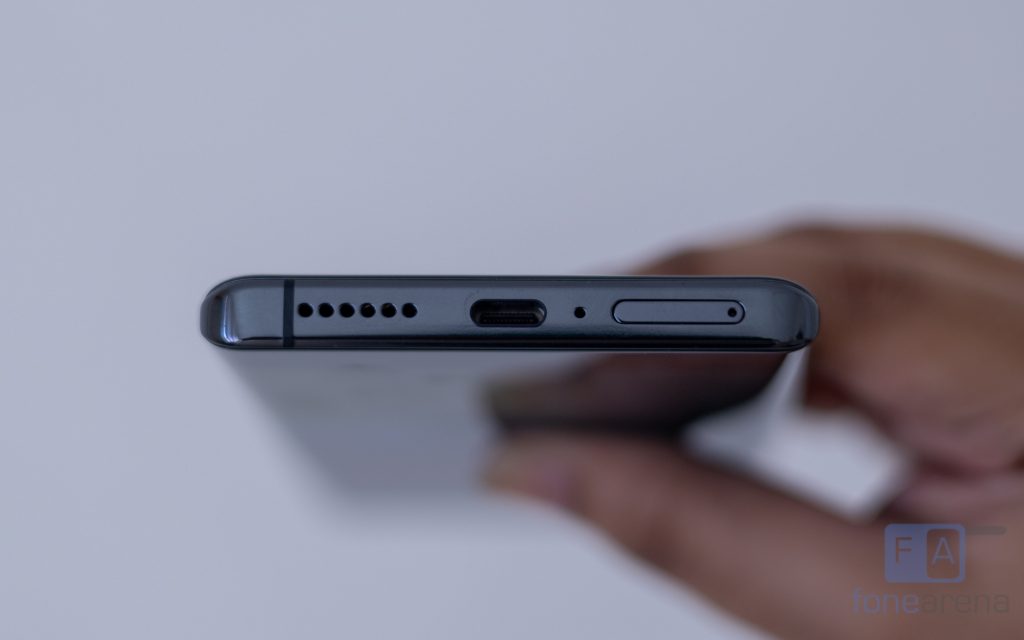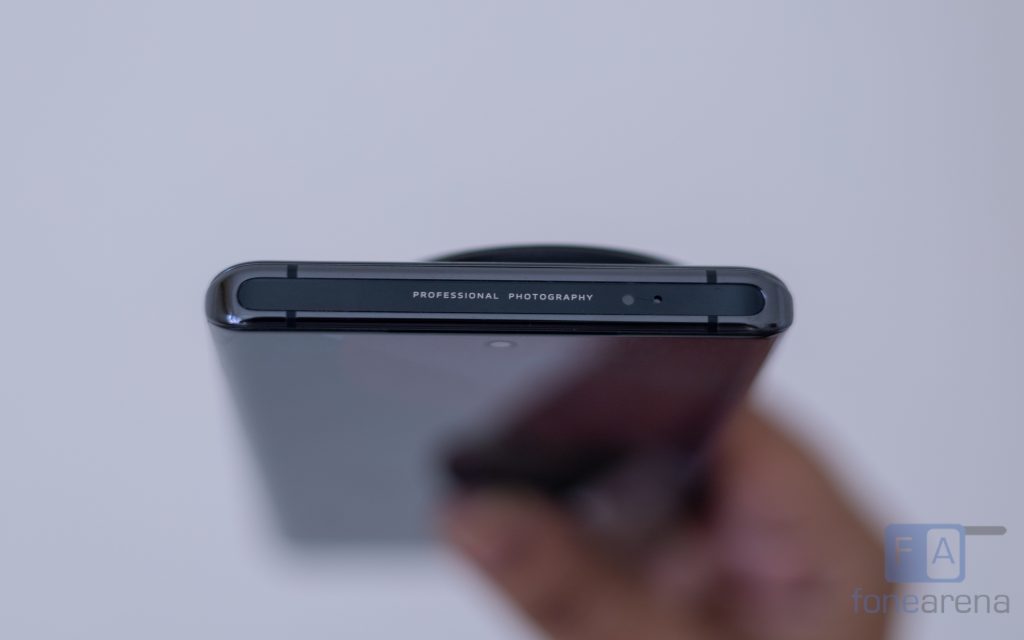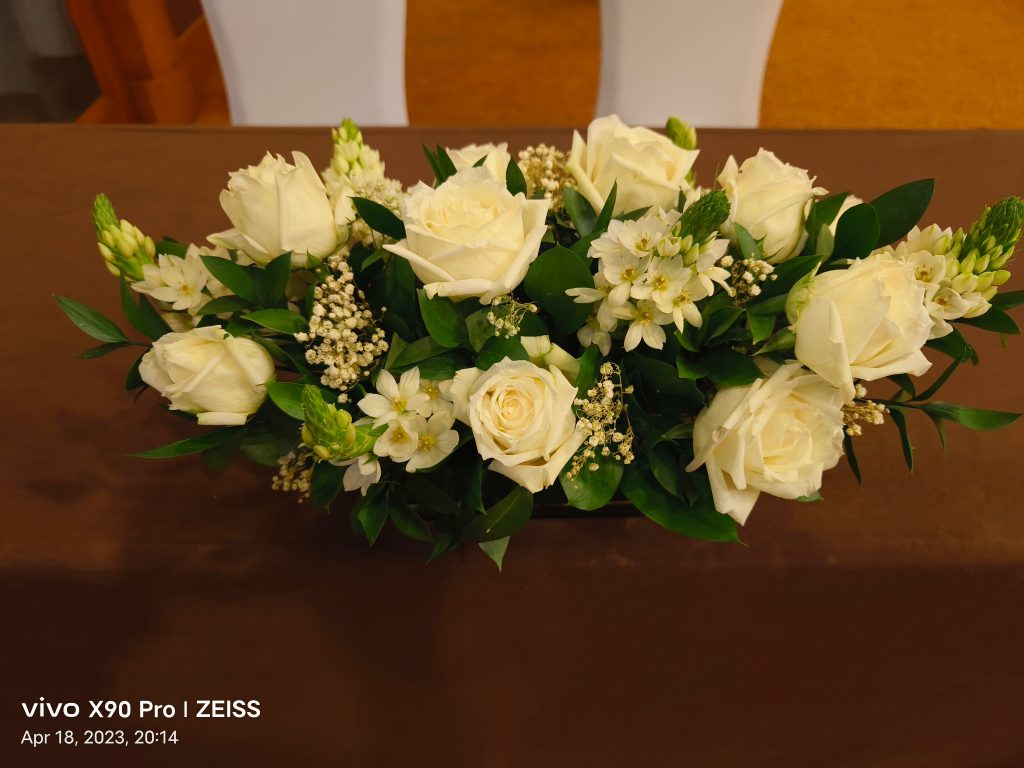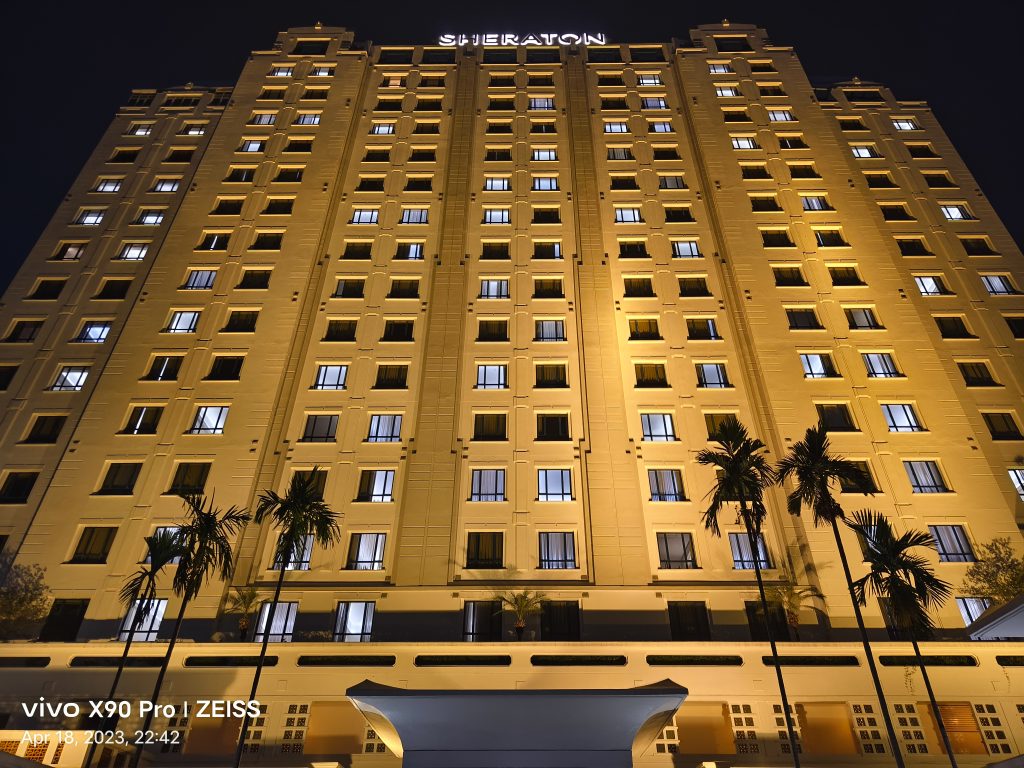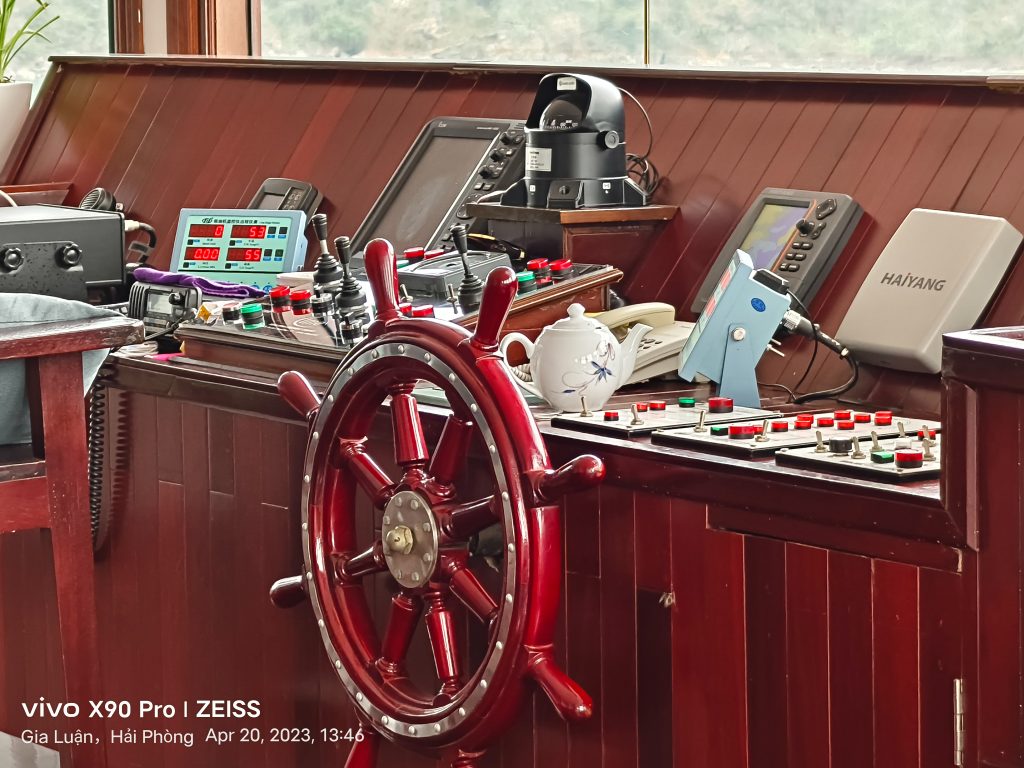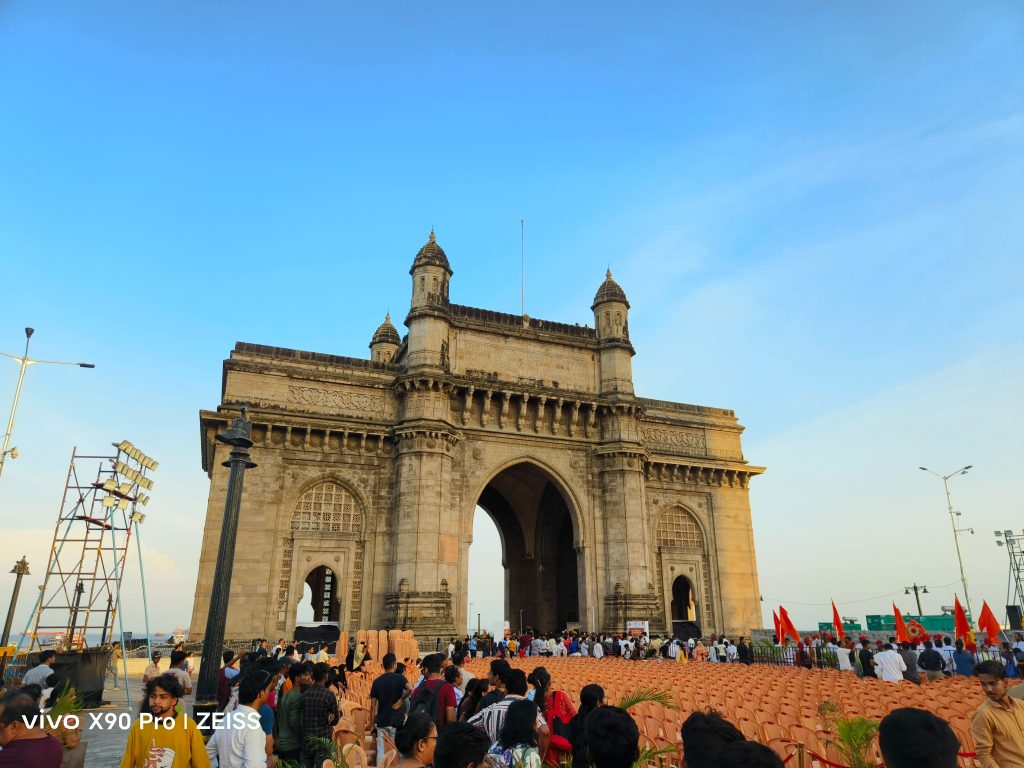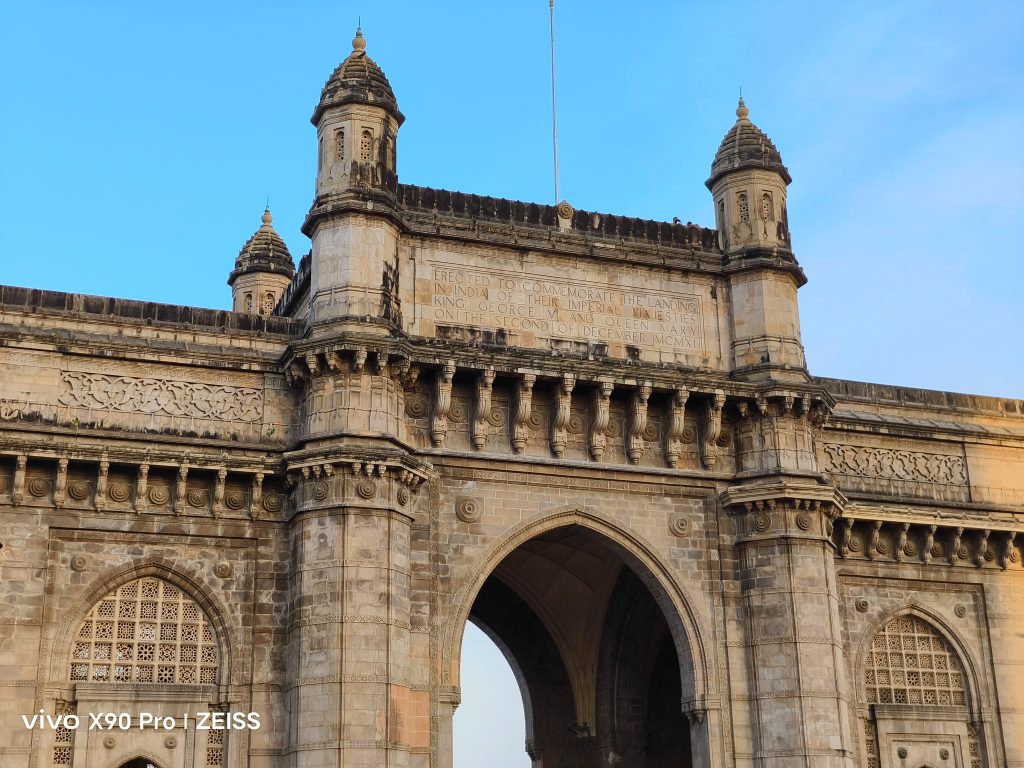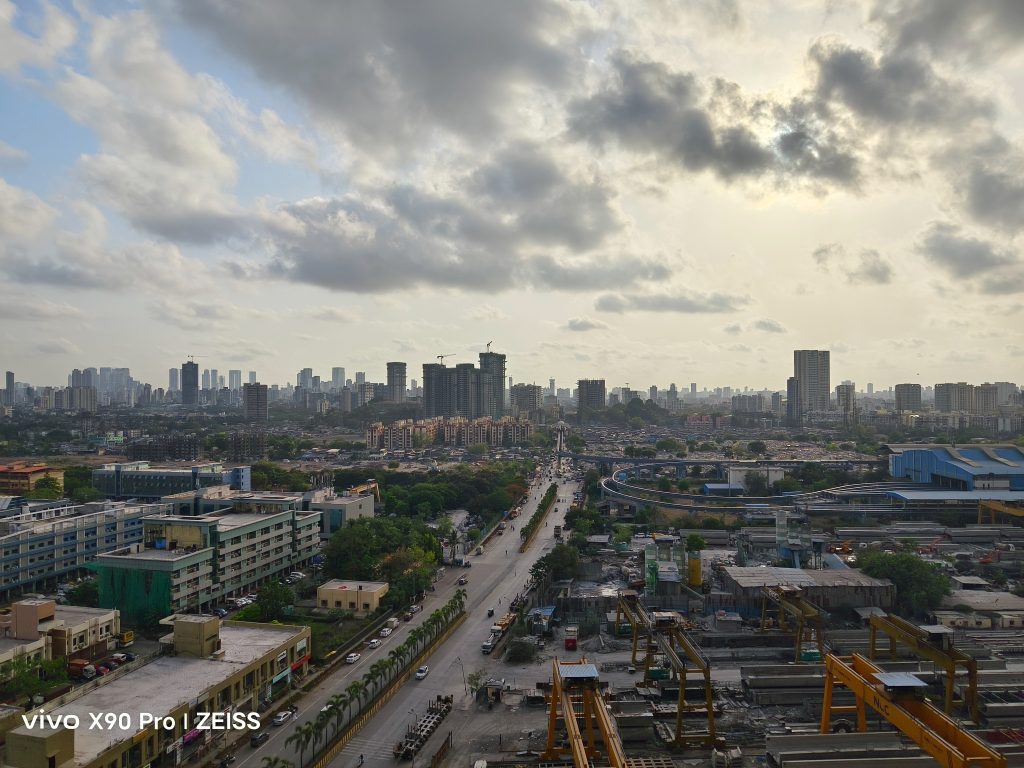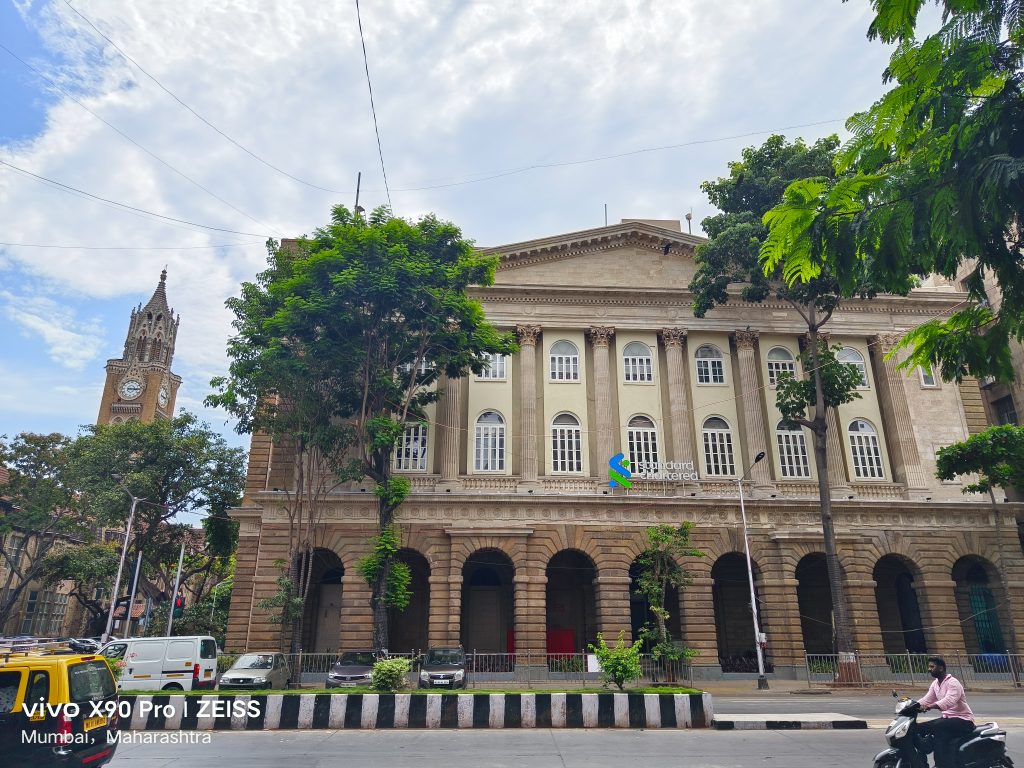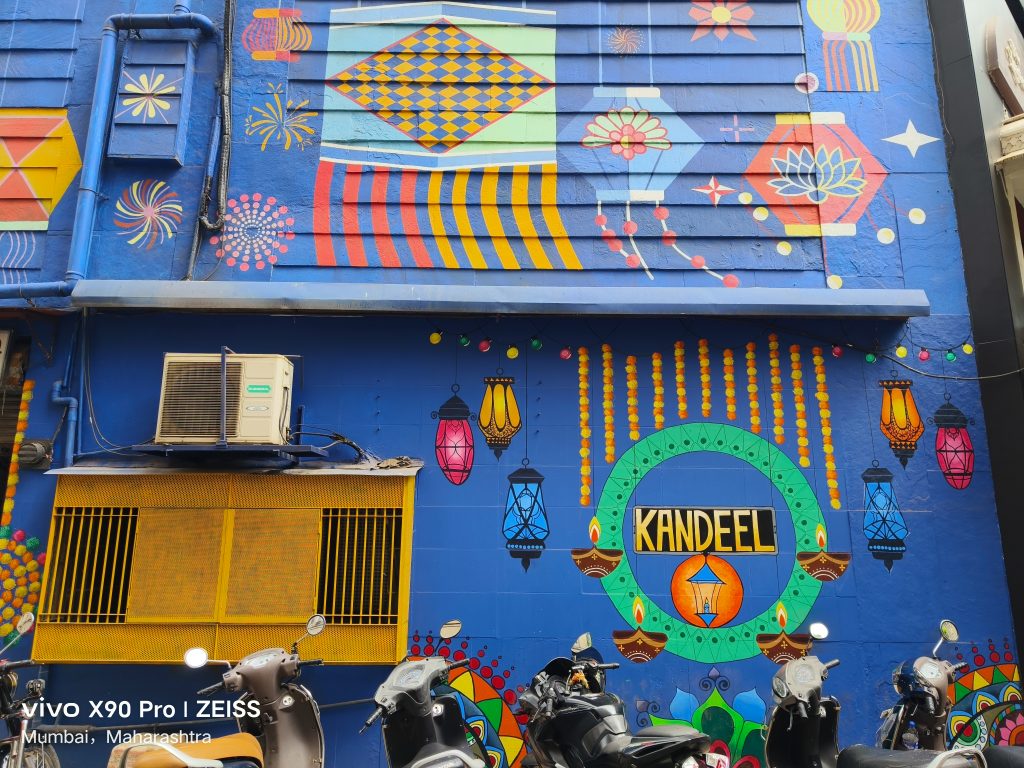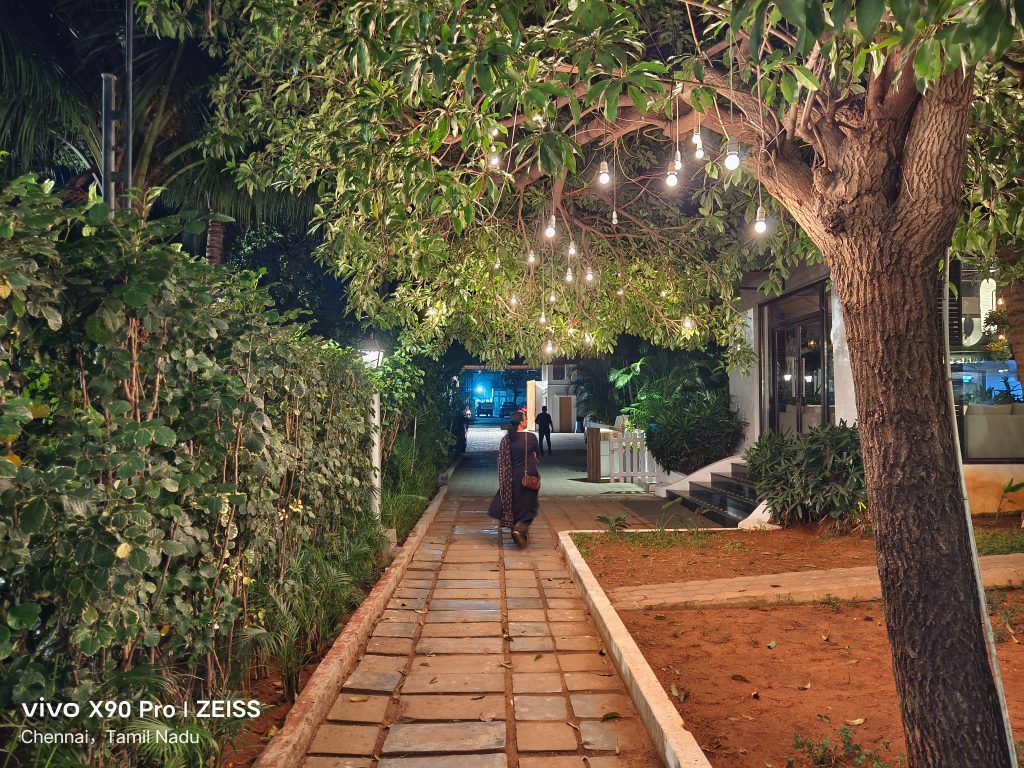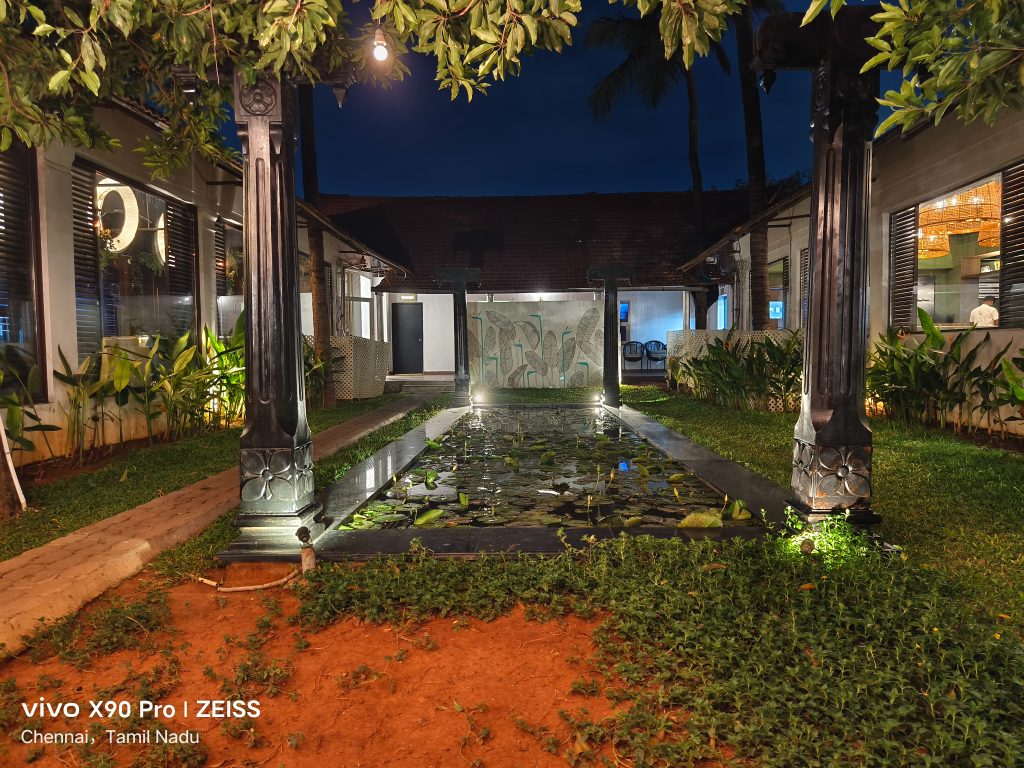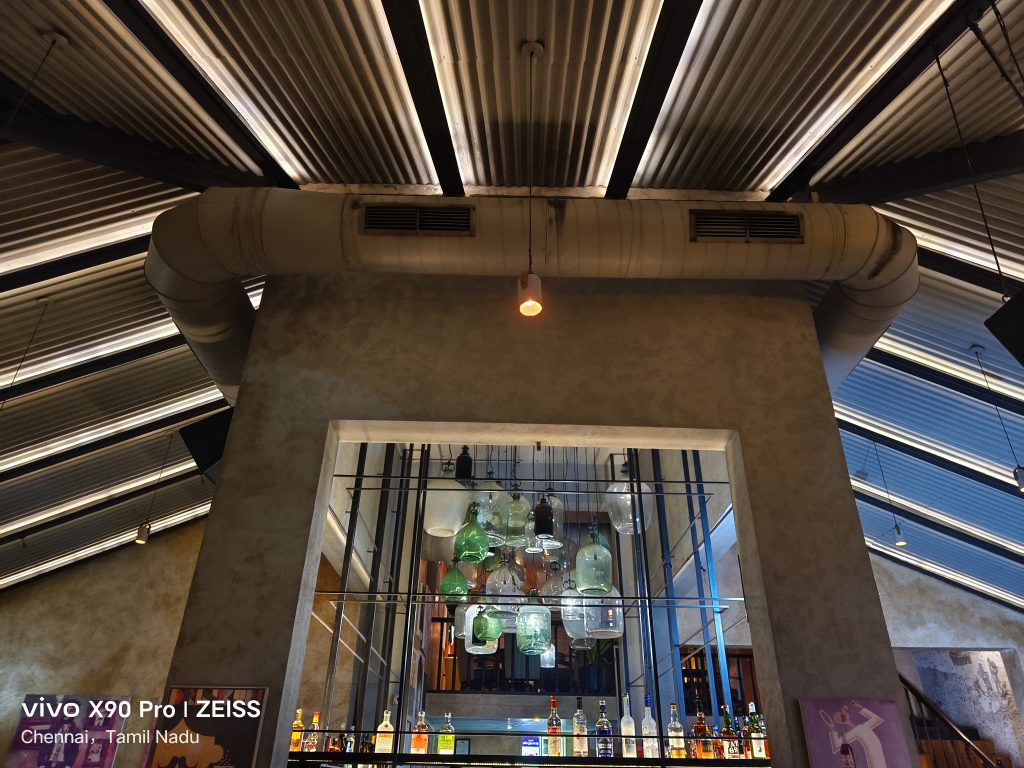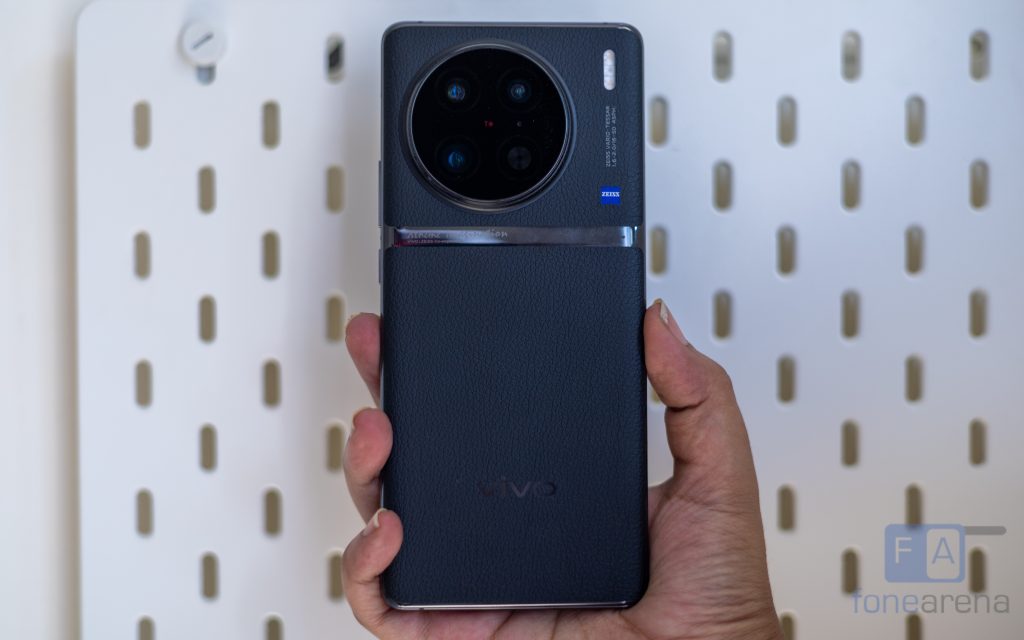
The Vivo X90 Pro was launched in India back in April, replacing the X80 Pro, which was their previous flagship smartphone. This year, the phone has been upgraded with MediaTek’s fastest processor, new camera hardware and faster charging. However, Vivo has also increased the price of the X90 Pro. Is it worth the price? Read on in my review
Box Contents
- Vivo X90 Pro 12GB+256GB version in Legendary Black colour
- 120W FlashCharge wall adapter (Rated for 20V at 6A)
- USB Type-C to Type-C cable
- Phone case
- SIM Ejector tool
- Quick Start and Warranty guide
Display, Hardware and Design
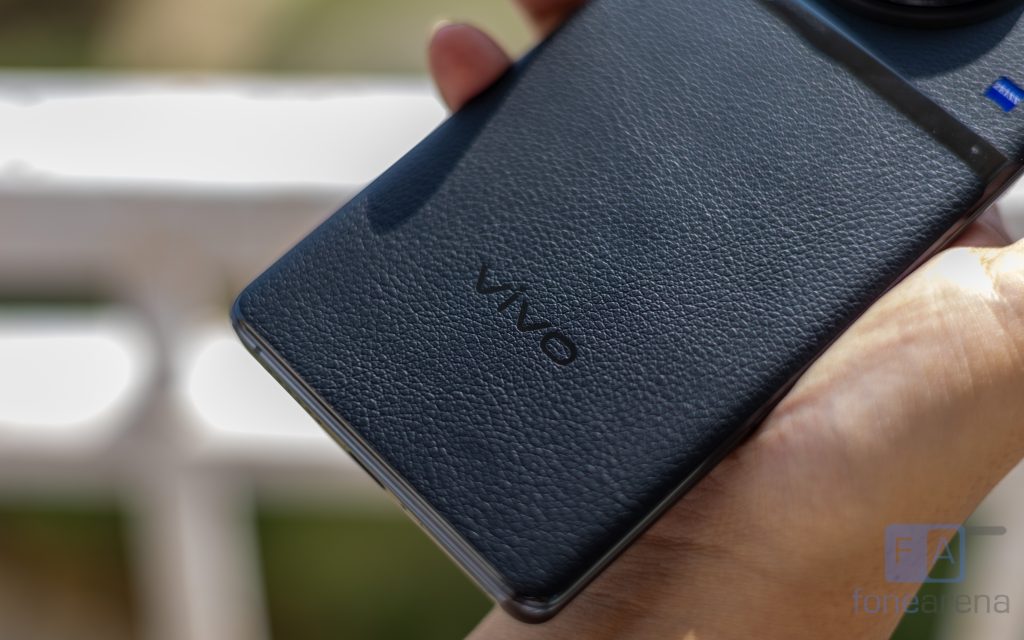
Vivo’s X-series smartphones are quite distinct in their design, and the X90 Pro is quite similar to the X80 Pro. The overall design feels like an evolution, with the biggest change being the design of the camera bump. Both the front glass and rear panel are curved, which makes the device really nice to hold. Instead of glass, vivo has opted for a leather finish for the rear panel, and it only comes in one colour – Legendary Black.

The leather finish feels very premium and provides a lot more grip when compared to a smooth glass finish. Along the middle of the rear panel, there is a strip of glossy metal with the words “Xtreme Imagination” written along with Zeiss branding. I am quite unsure as to why Vivo chose to put that text there, as it does not look particularly good.
The rear camera bump is circular this time instead of a big rectangle, so it doesn’t cover as much of the rear panel. However, it does protrude out more than any other camera bump I’ve seen. All of the rear cameras are housed within this bump, unlike last time where the periscope camera was separate.
The railings on the side are metal, which is expected for a flagship phone. The button placements and ports are the same as before. Both the volume rocker and the power button can be found on the right edge of the device, and the left edge is bare. On the bottom edge there is a speaker grill, USB Type-C port and the dual SIM slot. The top edge has an IR blaster which can be used as a remote control for home appliances.
It is IP68 water and dust resistant. Unfortunately Vivo only includes a flimsy clear plastic case with the X90 Pro, unlike the black bumper case that came with the X80 Pro.
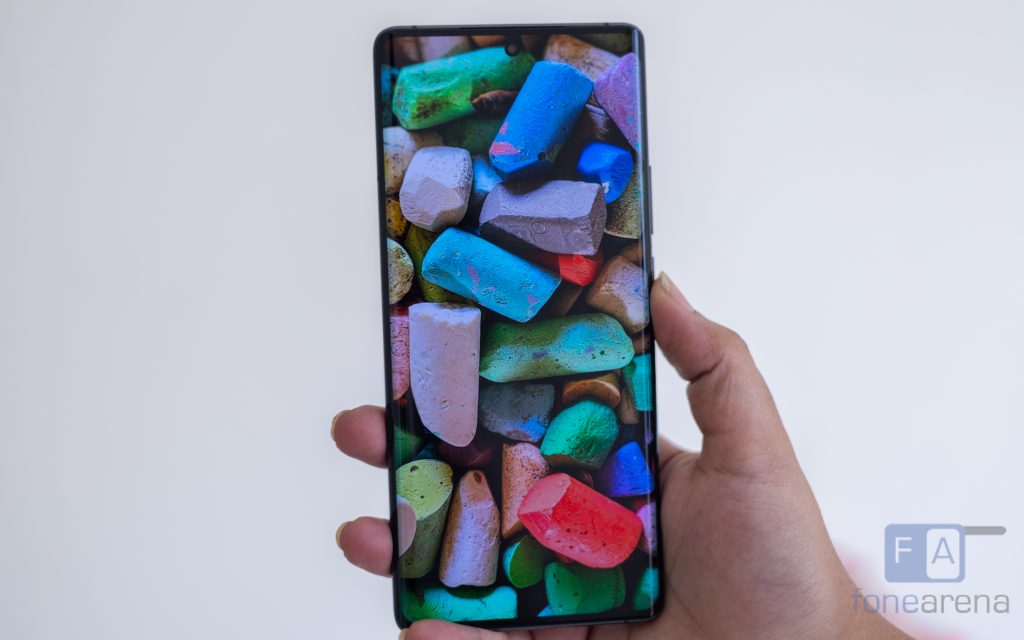
Coming to the display, the X90 Pro display is a bit of a downgrade from the previous generation. It has a 6.78-inch FHD+ BOE Q9 OLED panel with a resolution of 2800×1260 and a maximum refresh rate of 120Hz. For some reason, vivo downgraded the resolution from the X80 Pro, which had a WQHD+ panel.
The peak brightness is a bit lower at 1300 nits, and it supports HDR 10 streaming on Netflix and YouTube. There still isn’t any support for Dolby Vision however, and I wish vivo would add that. The colour accuracy is good and visibility in sunlight was not an issue. With the refresh rate set to 120Hz, navigation the UI feels smooth and looks great for gaming. You also get a highly customizable Always-on-display.
Camera

Like every other X-series smartphone, Vivo has focused on the camera system. The specifications are as follows –
- 50MP camera with 1″ IMX989 sensor, OIS, f/1.75 aperture
- 12MP ultra-wide camera with Sony IMX663 sensor, f/2.0 aperture
- 50MP 50mm IMX758 2X portrait camera, f/1.6 aperture
- 32MP front-facing camera with f/2.45 aperture
The X90 Pro features their latest custom V2 imaging chipset, and the whole system was co-engineered in collaboration with ZEISS. Interestingly, Vivo has removed one of the zoom lenses, which does feel like a bit of a downgrade.
Previous X-series smartphones from Vivo focused heavily on its camera performance, and the X90 Pro is no different. The phone’s primary sensor produces some impressive photos in well-lit conditions, with loads of detail and contrast. The Auto HDR works well, the autofocus is fast and colours look mostly natural with a little bit of punch.
Portraits are definitely a strong point for the X90 Pro. The subject cutouts are clean and the bokeh effect is not overdone. There are also many types of bokeh effects developed in collaboration with ZEISS that produce some cool effects.
In low-light conditions, the primary sensor’s large size and OIS help the phone perform reasonably well. The phone can capture a good amount of detail without too much noise, however I still prefer night shots from the Galaxy S23 Ultra and the Pixel 7 Pro.
Here are some samples:
Regarding video, the X90 Pro can shoot at up to 8K 24FPS. The 4K 60FPS footage is fine, with decent stabilization. For ultra stabilization mode, it is limited to 1080p 60FPS.
Software, UI and Apps
For software, the X90 Pro runs Funtouch OS 13 that is based on Android 13. Vivo has promised 3 years of Android OS upgrades and 3 years of security patch updates. This is still one year lower than the competition, and it is quite disappointing for a flagship.
If you used a recent vivo smartphone, the latest version of Funtouch OS 13 will feel very familiar. There are a couple of changes such as the ability to change colours for the system’s UI and built-in apps. There are better privacy-focused features such as hiding photos and videos, an improved video editor and better app-pining capabilities. And of course, you get all of the updates from Android 13 itself.
You get the usual set of pre-installed first-party apps from vivo and from Google, and thankfully the unnecessary, extra pre-installed apps are missing. Kudos to vivo for listening to user feedback.
Overall, Funtouch OS 13 feels a lot more cleaned up and smoother. The amount of bloatware and advertising has gone down, which is great. I hope Vivo continues in this direction in the future.
Fingerprint sensor and Face unlock
The X90 Pro has one of the fastest biometric unlocks via its in-display fingerprint sensor. The accuracy was good and I rarely faced a failed authentication. The phone also supports Face Unlock, however it is not as secure.
Just like before, Funtouch OS 13 offers features such as app encryption and Privacy Mode. You can change the fingerprint detection animation too. The phone no longer supports extra features such as two-finger authentication and the ability to change the area of detection.
Music Player and Multimedia
Similar to before, the X90 Pro has a pre-installed Music Player app, where you can organize and play local music files. The app still has a feature called DeepField, which offers sound effects, headphone adaptation, equalizer and more.
The stereo speakers are nearly as good as the competition. They get quite loud and have decent quality. The phone is Widevine L1 certified, so you can play HD content on Netflix, Amazon Prime Video and other streaming apps without any issues.
Dual SIM and Connectivity
The phone features dual 5G standby and supports all of the major SA and NSA 5G bands. 4G VoLTE is supported on major Indian network operators such as Airtel, Reliance Jio and Vodafone Idea. I did not face any drops in calls and the call quality was good. The SAR value was reported at 1.24W/Kg for the Head and 1.24W/Kg for the Body, which is under the safe limits set by the Government of India.
Other wireless connectivity options include Wi-Fi 6 and Bluetooth 5.3. The USB Type-C port is rated for USB 3.2 Gen 1 speeds, and the phone supports OTG and NFC. Lastly, the phone features support for GPS, BEIDOU, GLONASS, GALILEO, QZSS, and NavIC.
Performance and Benchmarks
For the X90 Pro, Vivo made the choice to ditch Qualcomm’s Snapdragon chipset and instead opted for the MediaTek Dimensity 9200. The processor features a Cortex-X3 core clocked at 3.05GHz, 3 Cortex-A715 cores clocked at 2.85GHz and 4 Cortex- A510 cores clocked at 1.8GHz. For the GPU, it is equipped with ARM’s Immortalis-G715.
Although Vivo has used MediaTek in their flagship X-series before, this is the first time it is present on their highest-end flagship smartphone for the Indian market. The Dimensity 9200 promises equivalent performance to Qualcomm’s Snapdragon 8 Gen 2, which is great. The processor is powerful, capable of performing well in everyday tasks and in demanding tasks such as gaming. I was able to get stable, high FPS in Genshin Impact, and in Call of Duty the phone maintained 90FPS throughout without overheating.
Funtouch OS 13 does support RAM expansion and with the X90 Pro, you can extend the RAM by another 8GB.
The Dimensity 9200 is also very power efficient, resulting in impressive thermal management and long battery life. Vivo has also equipped the phone with a large vapour chamber cooling solution. The phone did get warm during games like Genshin Impact, but it did not get uncomfortable. In everyday use, it remained cool all of the time.
Here are some benchmarks:

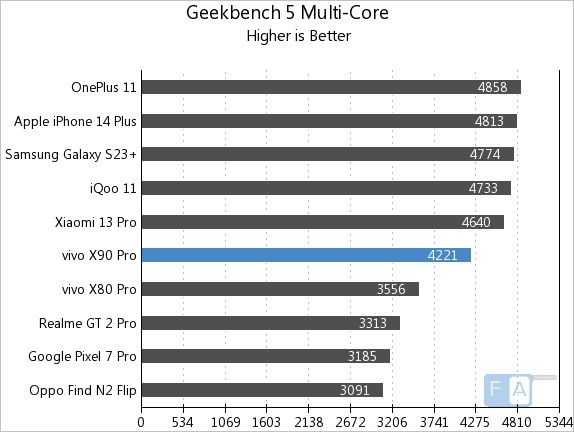
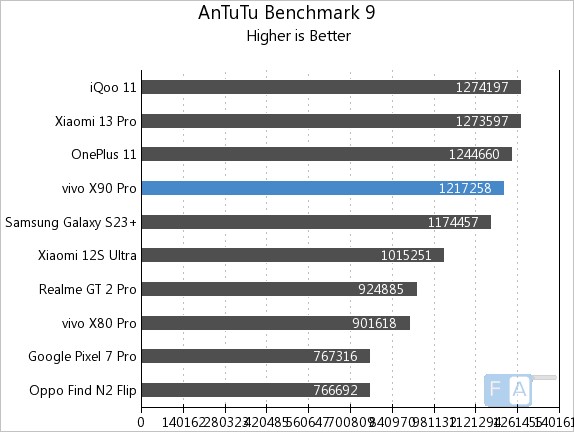
Battery life
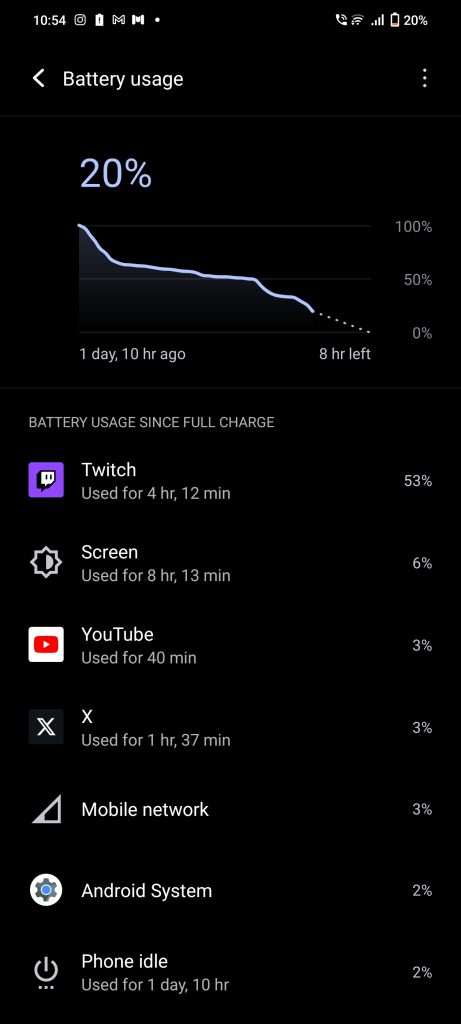
The battery life for the X90 Pro was impressive. Thanks to the efficiency of the MediaTek Dimensity 9200, the X90 Pro could comfortably last two days with light use. It would still get through a full day with heavy use, including a bit of gaming, GPS navigation, and a lot of social media use. My average screen-on-time was around 8 hours.
Vivo upgraded the charging this time around. The X90 Pro supports 120W Dual-Cell FlashCharge, and includes the charger in the box. It could charge from 5% to 100% in a little over 25 minutes.
Conclusion
When you consider the whole package, the X90 Pro is a pretty solid phone. Great design, good cameras, plenty of performance, and a long battery life. The issue is when you compare it with the X80 Pro from last year. That phone simply offered more, such as more cameras and a higher resolution display. On top of this, Vivo increased the price to Rs. 85,000, which is a tough sell considering the other flagships in the market.
If you really like Vivo smartphones and you like all of their camera features and gimmicks, then the X90 Pro is probably the best choice on the market. However, keep in mind, competition is stiff in the flagship market, and there are great offerings from Apple, Samsung, Xiaomi and OnePlus.
Availability
The Vivo X90 Pro costs Rs. 84,999 for the single 12GB + 256GB model. It is available from vivo India eStore, Flipkart and offline stores.

